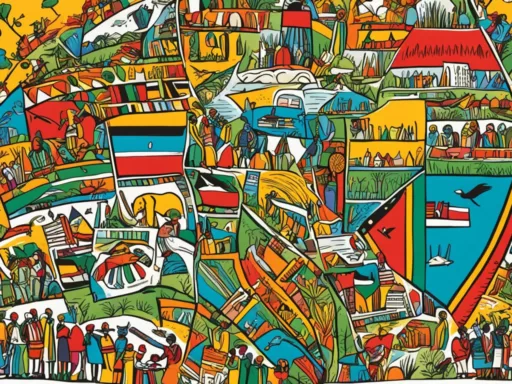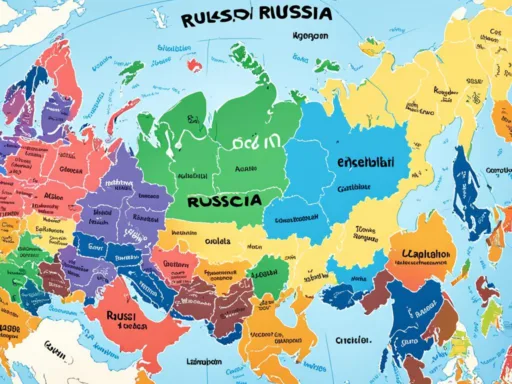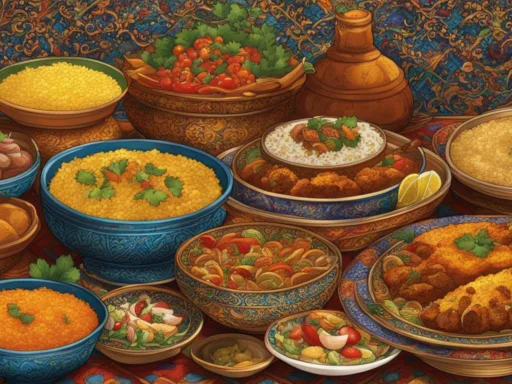The allure of France stretches far beyond its world-renowned architecture and cuisine, delving deeply into a rich linguistic heritage that paints a vivid portrait of the nation’s soul. At the core of this heritage lies the French language, which holds the esteemed position as the sole official language of France, a distinction enshrined in the nation’s constitution and embraced by a vast majority of its populace.
Yet, the languages spoken in France are as variegated as its landscapes—from the rolling vineyards of Bordeaux to the snowy peaks of the Alps, each region echoes with its own linguistic heartbeat. This tapestry includes regional tongues and dialects that, despite lacking legal recognition, are integral to the cultural DNA of the Republic.
Key Takeaways
- French is the official and most prevalent language spoken across France.
- A diverse array of regional and minority languages coexist with French, enhancing the cultural richness of the nation.
- France’s varied linguistic landscape includes languages such as Alsatian, Breton, and Basque.
- The recognition of regional dialects underscores a growing appreciation of France’s multilingual heritage.
- Immigrant languages like Arabic and Portuguese contribute to the pluralistic identity of French society.
- French Sign Language is a recognized part of France’s inclusive linguistic community.
The Linguistic Tapestry of France
The linguistic diversity in France is a vivid illustration of the country’s rich cultural heritage. Beyond the ubiquitous French language, a spectrum of regional languages of France adorns this expansive linguistic landscape. From the distinctive Germanic tones of Alsatian in the east to the unique language isolate of Basque in the southwest, and the melodious Celtic rhythms of Breton in the northwest—each regional tongue contributes a distinct thread to the tapestry.
Multilingualism in France is both a nod to its historic past and a present-day cultural reality. It reflects a time when regional dialects flourished independently before being unified under the banner of French. Yet, these regional voices persist, echoing the resilience and the evolving nature of France’s linguistic identity.

The regional languages of France do not simply exist; they tell stories, embody traditions, and represent communities. Despite not receiving the same legal recognition as French, they continue to be a source of local pride and cultural expression. The affluence of these regional languages, such as the Gallo-Romance group, enriches the nation’s identity, adding complexity and color to its social fabric.
Understanding the scope of France’s regional languages requires a glance into their categories:
- Celtic languages, with Breton as the most notable example
- Germanic dialects like Alsatian and Lorraine Franconian
- Italo-Dalmatian languages, including Corsican
- The Gallo-Romance languages, encompassing both langues d’oil and Provençal dialects
This linguistic quilt is not without its challenges, as these languages face the pressing need for preservation amid a globally dominant French influence. The cultural fabric of France is at a crossroads, where each regional language vies for revitalization and acknowledgement within a nation known for its linguistic diversity.
Activists and promoters of linguistic heritage work tirelessly to ensure that the echoes of these ancient tongues do not fade into silence. Schools offering bilingual education, cultural festivals celebrating local dialects, and community programs aimed at teaching the young about their linguistic ancestry are just a few of the ways through which these voices refuse to be stilled.
The narrative of multilingualism in France is far from reaching its conclusion. Rather, it continues to unfold, richly woven and vividly spun, as it resonates through the ages. The celebration of linguistic diversity, and with it, the acknowledgement of the unique identity each language holds, remains a passionate pursuit in the heart of France.
French: The Official Language and Its Historical Reach
Embarking upon a journey through time, the story of the French language is one of profound transformation and cultural convergence. Understanding the historical evolution of French is essential when exploring the learning of languages in France and recognizing its unique placement among the official languages of France. Let’s delve into the roots that have entrenched French as the dominant means of communication and the legal structures that continue to preserve its esteemed status.
The Evolution of French as a Dominant Language
Historically, the landscape of France was a patchwork of dialects and tongues, reflecting the region’s diverse communities and traditions. The period of the French Revolution marked a pivotal turning point as it sought not only political but also linguistic unification. Unlike the mere 50% of the population able to converse in French during the Revolution, the language experienced exponential growth in reach following significant legislation.
Acts such as the Ordinance of Villers-Cotterêts decreed French the mandatory language for all legal and governmental documentation, effectively setting it on the path to becoming the administrative and instructional language of the nation. Furthermore, the Jules Ferry laws of 1882 not only mandated free, compulsory education but also the exclusive use of French in public schooling, solidifying its role as the lingua franca.

The Legal Framework Upholding French Language Use
Fast forward to modern-day France, the legal infrastructure upholding the use of the French language stands firm. The omnipotence of French in official domains is evident from governmental communication to commercial advertising. Although private use of other languages remains unrestricted, the official realm is staunchly French-dominated, as denoted by the French Constitution.
In recent times, a distinct shift in attitudes has emerged. The constitutional revision efforts illuminated a growing recognition and respect for France’s regional languages and dialects. This move, though not granting official status, marks an increasing openness to the cultural and linguistic diversity that thrives within France’s borders.
From past to present, the French language has navigated a complex and dynamic historical path to reach its current day preeminence. As the crucible for learning languages in France, French continues to be the heart from which linguistic lifeblood flows into the nation’s multifaceted society.
Recognized Regional and Minority Languages of France
France’s commitment to its cultural mosaic is reflected in its vibrant tapestry of spoken dialects and regional languages. While these languages may not enjoy official status, they are inherently woven into the nation’s cultural fabric, each one pulsating with history and tradition.
Endangered yet Culturally Rich: The Breton Language
Breton, with its roots deeply planted in Celtic origins, whispers the tales of ancient Brittany. As an endangered language, its melodies linger on the tongues of a modest community dedicated to its revitalization. Breton’s presence, emphasized in bilingual signage and cultural celebrations, attests to France’s respect for linguistic diversity.
Alsatian and Lorraine Franconian: Germanic Influences in France
Eastward, Alsatian and Lorraine Franconian reveal Germanic influences that have shaped the linguistic contours of regions like Alsace and Lorraine. These Germanic dialects, spoken in France, defy borders and embody the cross-cultural exchanges that have historically enriched the nation.
Langues d’oïl and Provençal: The Sounds of Northern and Southern France
From the northern whispers of langues d’oïl to the southern serenades of Provençal, the country resounds with regional languages of France that carry the essence of their respective locales. Provençal, a variant of Occitan found in Provence, paints a picture of the region’s past splendor through its distinct linguistic strokes.
The recognition of these linguistic treasures, from the spoken dialects in France to the grassroots movements aiming to preserve endangered languages, is a testament to the national acknowledgment of the nation’s regional languages. They illustrate the merger of France’s heritage with contemporary efforts to cherish an integral part of its identity—the recognized languages of France.

| Language | Region | Speakers | Status |
|---|---|---|---|
| Breton | Brittany | Approx. 225,000 | Endangered |
| Alsatian | Alsace | Approx. 650,000 | Vulnerable |
| Lorraine Franconian | Lorraine | Unknown | Vulnerable |
| Provençal (Occitan) | Provence | Approx. 2,000,000 (all dialects) | Severely endangered |
| Langues d’oïl | Northern France | Varies by dialect | Ranging from vulnerable to severely endangered |
Languages Spoken in France: A Pluralistic Society
The French Republic, renowned for its cultural grandeur and historic past, is home to a multitude of voices that shape its modern identity. The symphony of popular languages in France extends beyond the elegant prose of French into a broader, pluralistic social milieu. This linguistic plurality exemplifies the intrinsic diversity and the embrace of a multilingual tapestry that encompasses native dialects and vibrant immigrant languages in France.
Within this vivid landscape, the ebb and flow of languages like Arabic, Berber, Italian, and Portuguese ring through the bustling markets and urban centers, contributing their unique cultural narratives to French society. These linguist treasures, remnants of France’s colonial history and testament to its global connections, enrich the country’s identity, making it a crucible of cultural fusion.
Immigrant Languages Enriching France’s Society
As the world converges within the hexagonal confines of France, one finds German dialects resonating in the tranquil provinces of Alsace-Lorraine while the Basque language’s distinct melodies permeate the Pyrenees’ air. These languages, along with others stemming from across the globe, weave together a rich tapestry emblematic of a society that celebrates diversity in unity. They stand as a testament to the nation’s historical receptiveness and integrative ethos, bolstering the narrative of learning languages in France and enriching the lives of its people.
A Look into France’s Linguistic Future: Multilingualism and Language Preservation
Looking forward, the prospect of France’s linguistic journey is one of conscious preservation and dynamic growth. Initiatives driving bilingual education and media representation, including the translation of globally recognized video games into the regional dialects, underscore a dedication to language preservation. These efforts signify a resolve to carry forth the legacy of France’s cultural patrimony into the future, ensuring that the voices of past and present continue to inform and shape the French way of life. This deep commitment to multilingualism unveils a forward-thinking vision for France, where every language’s nuances contribute to the shared experience and collective memory of its people.
FAQ
What are the official languages of France?
The sole official language of France is French, which is spoken by virtually the entire population and is mandated for use by the French Constitution.
Is France a multilingual country?
Yes, despite French being the official language, France is home to a variety of regional and minority languages, reflecting a rich tapestry of linguistic diversity. This includes languages like Alsatian, Basque, Breton, Catalan, and others.
How has the French language evolved to become dominant in France?
French became dominant through historical processes, including the French Revolution and legislation favoring its use, such as the Ordinance of Villers-Cotterêts and the Jules Ferry laws. Over time, it became the language of administration and education, cementing its role as the national lingua franca.
Are there laws in place governing the use of the French language in France?
Yes, the French government requires that French be used in official communication, education, and state publications. There are also laws pertaining to the use of French in advertising and commercial signage.
What regional languages are recognized in France?
France recognizes a variety of regional languages, including Alsatian, Basque, Breton, Catalan, Corsican, Occitan, and the langues d’oïl. These regional languages, while not granted official status, are culturally significant and protected by the French government as part of the country’s heritage.
Is the Breton language still spoken today?
Yes, Breton, an endangered Celtic language, continues to be spoken by a minority in Brittany, located in the north-west of France. It has a strong cultural presence and ongoing efforts are being made to preserve and revive its use.
What influence do Germanic languages have in France?
Germanic languages have notably influenced the Alsace and Lorraine regions, where Alsatian and Lorraine Franconian dialects are spoken. These dialects reflect the historical and cultural exchanges along France’s eastern border.
How do langues d’oïl and Provençal contribute to France’s linguistic identity?
The langues d’oïl, spoken in northern France, and Provençal, a form of Occitan spoken in the south, contribute distinct regional flavors to France’s linguistic identity, offering a diverse heritage of dialects and accents.
What immigrant languages are commonly spoken in France?
Languages such as Arabic, Berber, Italian, and Portuguese are commonly spoken in France, predominantly by communities from former French colonies and other immigrant groups, reflecting France’s historical and ongoing global connections.
What is the future of multilingualism and language preservation in France?
The future of multilingualism in France shows a positive trend towards the recognition and preservation of regional and minority languages. Initiatives, such as bilingual education programs, cultural promotion, and linguistic diversity in media, suggest a growing appreciation and protection of the nation’s rich linguistic landscape.






